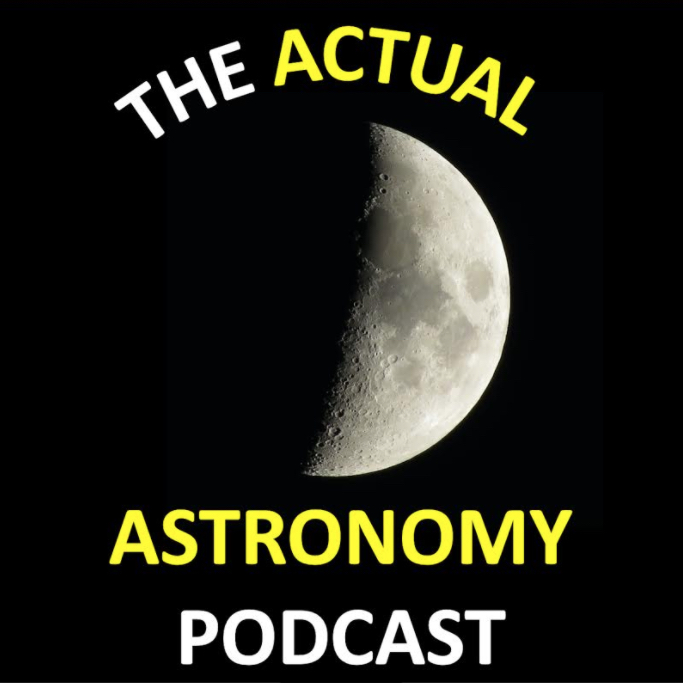Podcaster: Shane and Chris

Title: How to observe Comet 2022 E3 ZTF
Organization: Actual Astronomy
Link : https://actualastronomy.podbean.com/
Description: The Actual Astronomy Podcast Presents How to Observe Comet 2022 E3 ZTF. In this episode we talk about how comets work as well as how they get their names. We explain how to easily find Comet ZTF (C/2022 E3) and what you can expect to see with the naked eye, binoculars and telescopes. The observing window is short for your best view of the comet and it will only be best during the last week of January and first day of February so make the most of it!
Bio: Shane and Chris are amateur astronomers who enjoy teaching astronomy classes and performing outreach where they help the eyes of the public to telescope eyepieces.
Today’s sponsor: Big thanks to our Patreon supporters this month: Rob Leeson, David Bowes, Brett Duane, Benett Bolek, Mary Ann, Frank Frankovic, Michael Freedman, Kim Hay, Steven Emert, Frank Tippin, Rani Bush, Jako Danar, Joseph J. Biernat, Nik Whitehead, Michael W, Cherry Wood, Steve Nerlich, Steven Kluth, James K Wood, Katrina Ince, Phyllis Foster, Don Swartwout, Barbara Geier, Steven Jansen, Donald Immerwahr
Please consider sponsoring a day or two. Just click on the “Donate” button on the lower left side of this webpage, or contact us at signup@365daysofastronomy.org.
Please visit our Patreon page: https://www.patreon.com/365DaysOfAstronomy
or you can consider to sponsor a day of our podcast : https://cosmoquest.org/x/365daysofastronomy/product/sponsor-an-episode-of-365-days-of-astronomy/
Transcript:
How to observe Comet 2022 E3 ZTF on episode 293 of the Actual Astronomy Podcast. I’m Chris and joining me is Shane, we are amateur astronomers who love looking up at the night sky and asking …will we get a naked eye comet?
Quick Facts:
- Currently in the fainter 6th Magnitude forecast to brighten rapidly to 4th magnitude making it already a binocular target
- Already brightening faster than predictions.
- Best dates to observe are January 16th to February 1st outside this range the moon will interfere
- It is a morning target, highest in the circumpolar sky before dawn.
First we have a legal disclaimer: The Actual Astronomy Podcast, its associated partners and subsidiaries shall not be held legally or otherwise responsible for the brightness of Comet 2022 E3 ZTF. Any brightness predictions by Chris and Shane reflect their own personal opinions and not those of The Actual Astronomy Podcast.
So why all the legalease? – Well, comets are notoriously unpredictable.
This was before our time but Comet Kohoutek , C/1973 E1 , was a comet that passed close to the Sun in December 1973. Early predictions were that the comet would become one of the brightest comets of the 20th century, capturing the attention of the wider public and the press and earning the comet the moniker of “Comet of the Century”. At -3 Comet Kohoutek became bright, but this was far dimmer than the optimistic projections and it was visible for only a short time before quickly dimming below naked-eye visibility by the end of January 1974.
Sean prompted today’s episode as who wrote to us and included a awesome early image of Comet 2022 E3 ZTF, Sean writes:
Hi Chris and Shane!
I heard you guys talking about this comet in the past couple episodes so wanted to share my first attempt at imaging it.
I had just finished a night shift and was very surprised to see that it was clear out, I got a bit excited and started the drive home hoping that the clouds would stay away long enough to get a few shots of it. I got home and it was crystal clear until the moment the telescope was set up and ready to go……..It started out as a wall of cloud cover and was very close to calling it after about an hour. I went outside to put the scope away and saw a bunch of clear breaks so I set it to take a run of 60 second exposures until it got too bright out. I ended up with a handful of shots that were good enough for a once in a lifetime comet under mainly cloudy skies for months.
The attached image was shot with my Astro-Tech AT72EDii and a ZWO astronomy camera, very excited to see how this one evolves.
End of podcast:
365 Days of Astronomy
=====================
The 365 Days of Astronomy Podcast is produced by Planetary Science Institute. Audio post-production by Richard Drumm. Bandwidth donated by libsyn.com and wizzard media. You may reproduce and distribute this audio for non-commercial purposes.
This show is made possible thanks to the generous donations of people like you! Please consider supporting to our show on Patreon.com/365DaysofAstronomy and get access to bonus content.
After 10 years, the 365 Days of Astronomy podcast is poised to enter its second decade of sharing important milestone in space

